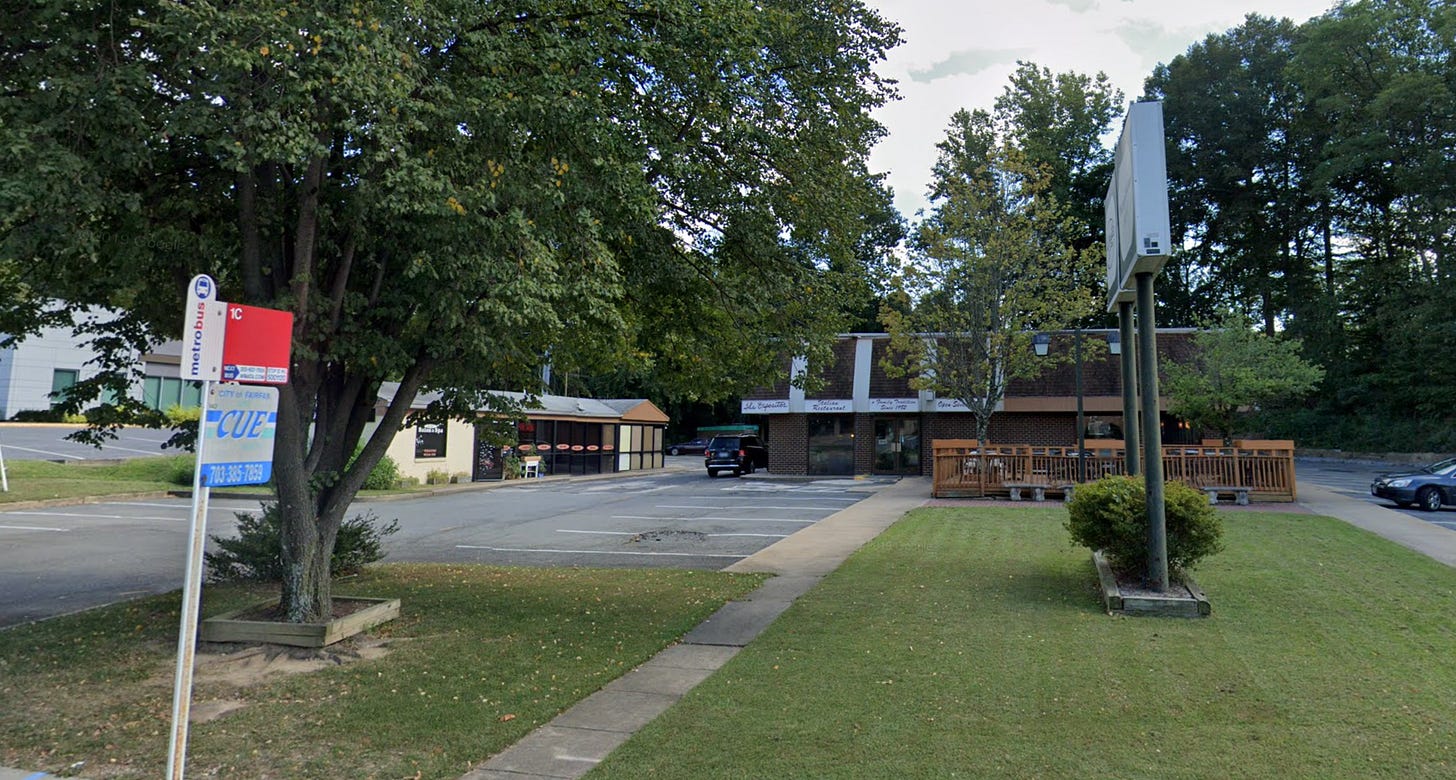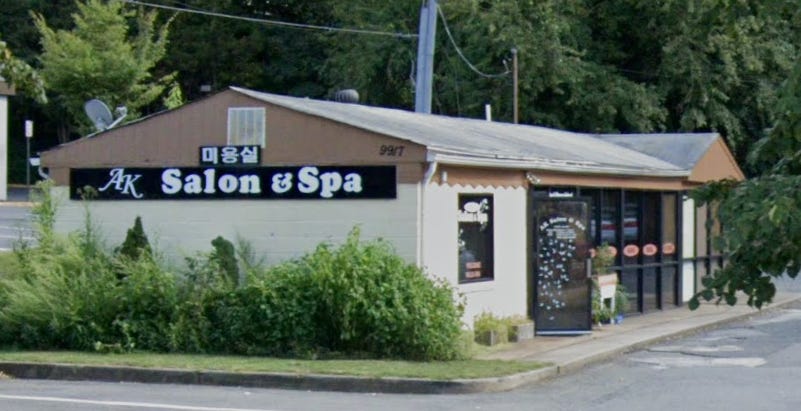A Little Bit of Motel
Introducing a new, fun feature on the unexpected lives of commercial buildings
I’m fascinated by the contrast between the widely held notion that commercial structures in suburbia are single-use and disposable, and the reality that these buildings often endure for decades under different owners and business types, and sometimes with significant remodels or additions that nonetheless leave the basic structure intact.
This is going to be a series consisting of brief posts highlighting buildings that illustrate this interesting complexity. I’d love examples from readers in the comments too! (This may end up as an extra feature for paid subscribers, when I try that out.)
Anyway, what do you think you’re looking at here? This is on the eastbound side of U.S. Route 50 in Fairfax, Virginia, heading into Washington, D.C.
Here’s a closeup:
You’re looking at a fragment—possibly the office or the smaller wing in a U-shape arrangement—of an old midcentury motel! The roof shape and the cinderblock construction sort of give it away if you know you’re looking for it. The gable at the back is, I believe, where this would have attached to the main portion of the building. The rest of the motel, according to imagery I viewed from the fascinating NETR Historic Aerials service, was demolished some time between 1964 and 1979. (Type an address there, and you can view the land over decades of aerial photos.)
Here is a postcard of the original motel; I think the section on the left, which is viewed straight on in the postcard and looks shorter than it is, is the wing of the building that survived. The larger building sitting to the right of the surviving fragment is today an Italian restaurant. I’m not sure if the fragment remained a small collection of rooms before it became essentially a tiny strip mall, or if the two buildings belonged to the same owner back in the 1980s.
Here’s an interesting document full of photos of the first- and second-generation roadside businesses that once lined Route 50 in Fairfax, from retired GMU art history professor Randolph Lytton.
Even in areas that have seen intensive development and densification, there’s a lot of this kind of thing around. Most of it is not obvious, but it adds a layer of complexity to these commercial landscapes that a lot of people are not aware of.





Before the salon/spa part of that building, it was a gun sales store.
It was a gun range for awhile back in the 70s/early 80s